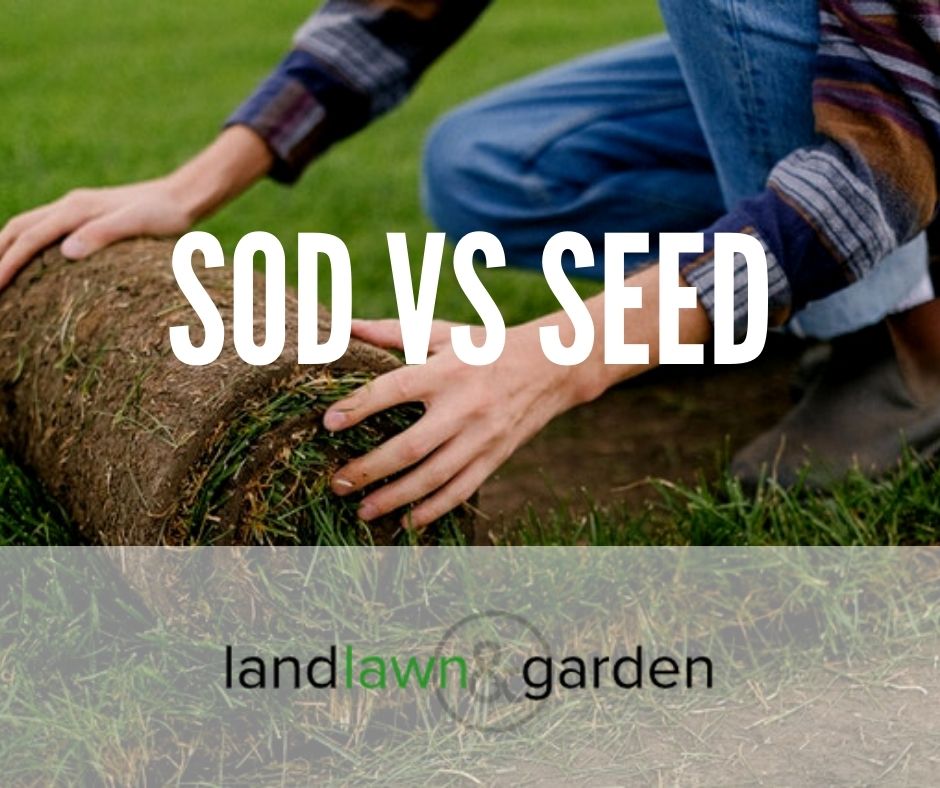If you are looking for a way to beautify your garden, artificial grass and turf are excellent options instead of real grass. However, before you disregard natural grass and change the entire makeup of your lawn, it’s important to consider the pros and cons of turf, real grass, and Astroturf. Practical factors, aesthetics, and sustainability are all factors that need consideration.
Turf is grass attached to the soil by its roots that can be rolled/replanted for new lawns or recreational sports. Real grass is a living plant with blade-like leaves primarily planted to establish lawns. Astroturf is an artificial, plastic turf used for sports grounds and low-maintenance lawns.
Which one is right to enhance your curb appeal? Read on to learn more about turf, real grass, and Astroturf, aka SIMPLIFIED.
Quick Links
Turf
“Turf” is also known as “sod,” is the grass attached to 1 to 2 inches of soil, held together by roots. Turf can be harvested, rolled up, or replanted. In addition, turf is often used by landscapers to establish new lawns.

Turf is also a term used by horticulturists referring to turf as grass that is mowed and maintained with the same purpose as a lawn. Turf is specially cultivated to be trimmed and cut like pieces of carpet into strips or squares.
Turf is valuable in the landscape for aesthetic appeal and several environmental contributions, including:
- protecting soil from erosion
- capturing run-off water
- reducing dust
- heat irradiation.
As a cushion-like, natural carpet, turf is a type of lawn used in recreational sports or relaxation.
Due to its ability to withstand rough contact and activity, turf is often used for outdoor play and sporting events like golf courses and soccer or football fields.
Healthy, attractive lawns begin with appropriate turfgrass species adequately installed and maintained.
Advantages of Turf
Your dream lawn is green, green grass doesn’t have to exist only in a galaxy far, far away. Here are some advantages of turf to attain a beautiful lawn:
- Turf is an immediate establishment of a fully grown lawn.
- Turf is relatively easy to lay and greens your garden in an instant.
- You are saving 6 to 12 months’ worth of time when you buy turf.
- It only takes 3 to 6 weeks for a turfed lawn to be used.
- There is no need to worry about purchasing suitable seed varieties or quality – it’s already been done for you.
- The sod seed has been sown evenly (a lot trickier than you may think).
- A benefit is turf is that there are no bald patches in your new lawn.
- Turf is basically weed-free.
- Turf can be planted any time during the growing season as long as water is available.
Disadvantages of Turf
Like, all types of grass, turf also has its disadvantages. So let’s take a look at them:
- Turf has high initial costs.
- Turf is perishable.
- If turf isn’t laid on the same day as delivered, the quality diminishes rapidly.
- Turf roots do not root as well as grass seed.
- Limited choice of grass species.
- Turf requires a large volume of water initially.
- The turf strips need to be precisely laid to prevent uneven sections.
Real Grass
Real grass is a type of plant where the whole living plant or its leaves may be referred to as grass and in the context of lawns, it typically refers to growing your grass from seed.

Real grass absorbs carbon dioxide and releases oxygen. In addition, real grass acts as a natural filter for groundwater, and it hosts microorganisms that play a role in breaking down organic waste material.
Natural grass used in a landscape customarily is referred to as a “lawn.”
One of the most significant differences between natural, real grass and artificial turf is the level of maintenance and care. Natural grass requires several hours of work weekly to keep it looking its best.
Advantages of Real Grass
Real grasses are sustainable and environmentally sound choices that deliver various benefits artificial lawns can’t match. If you’re thinking about changing from natural grass to synthetic alternatives, consider the environmental and personal benefits natural lawns bring to your life. Here are advantages that will suffice to keep natural grass.
- Real grass is cost-effective.
- Natural grass purifies and improves the quality of air.
- Environmentally friendly:
- Traps and stores carbon dioxide that may otherwise contribute to global warming.
- Real grass generates significant amounts of oxygen (2,500 square feet releases enough oxygen for a family of four).
- Natural lawns cool themselves and their surroundings.
- Real grass improves groundwater quality.
- Real lawns purify rainwater.
- Natural lawns reduce run-off water from storms.
- Real lawns improve soil quality.
Disadvantages of Real Grass
Despite the multiple advantages of real grass, there are a few disadvantages to consider, such as:
- Choosing the right grass seed may be challenging.
- Germination is often uneven.
- Real grass is prone to a lot more weeds.
- It takes 6 to 12 months to create a mature natural lawn.
- General wear and tear can quickly occur, causing your grass to appear mottled.
- Natural grass requires high water usage.
Astroturf
“Astroturf” is a brand of artificial plastic turf. However, the brand name has become a common generic name for artificial grass.
Astroturf is a grass-like artificial lawn made of stiff nylon blades or polypropylene, which has a more refined grass-like appearance.
Today’s artificial grass types have come a long way. They now have softer but highly durable materials that move with the wind, creating a realistic appearance. These features make AstroTurf an ideal option for homeowners who desire the beauty of natural grass without the time-consuming labor it requires.
With artificial grass, you can choose various color options of shades of green that mimic the look of real grass. Some manufacturers offer atrifical turf in over 50 different shades of green.
AstroTurf is often used where maintaining a real grass lawn would be too difficult. It is commonly used in sports fields; however, homeowners also use AstroTurf instead of a real lawn to reduce time and maintenance costs.
Advantages of Astroturf
Installing Astroturf may have higher initial costs, but there are many advantages to Astroturf, namely:
- Saves water- Astroturf does not require any watering (unless rising is required from pets using it as a potty zone).
- Astroturf has little to no maintenance costs.
- Astroturf has no grass allergies.
- Astroturf is pesticide-free.
- Astroturf is much more durable than real grass.
Disadvantages of Astroturf
- AstroTurf is expensive to install.
- AstroTurf can be a heat hazard due to its heat-absorbing properties.
- Lead hazard- older turf field may contain lead that has been linked to severe health concerns.
- Other harmful chemicals- shredded rubber could contain toxic metals like arsenic, cadmium, chromium, and selenium.
- Toxic run-off. As an artificial field drains after heavy rain, the run-off (containing lead and other harmful chemicals) could contaminate the community’s ground and drinking water.
- Bacterial breeding ground. Blood, sweat, and other materials can remain on the synthetic turf from the fields not being washed. Staphylococci and other bacteria may survive on polyethylene plastic for more than 90 days.
- Once artificial, always artificial. Once you decide to install Astroturf, you have no choice but to reinstall another Astroturf when the first one needs replacing. The reason being, once plastic replaces natural grass, it kills all the living organisms in the subsoil, making it close to impossible to grow anything on that surface again.
Wrapping Up
Well, there you have it- Turf, real grass, and Astroturf simplified!
All three options are viable for your lawn. However, it’s up to you to weigh the pros and cons of each and decide which one is the best option for you.

So you want real grass, but sod or seed?
Click the button below to read our in-depth comparison of sod vs grass seed, the pros and cons of each, and make the correct decision for you and your lawn.

Kevin is the owner of Land Lawn & Garden. In addition to taking a lot of pride in his lawn at home, he also helps manage the family land. You can find more about him here.


